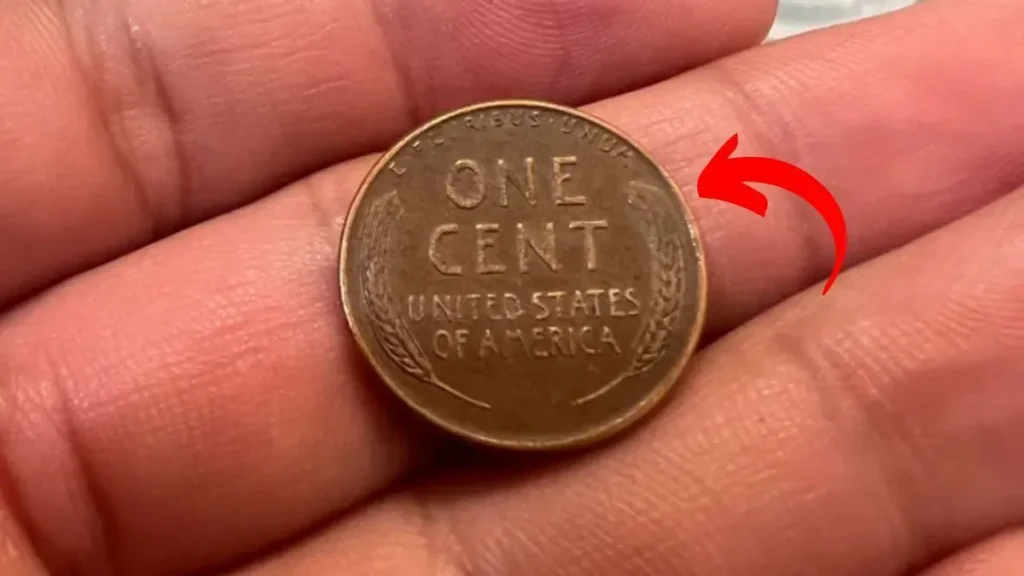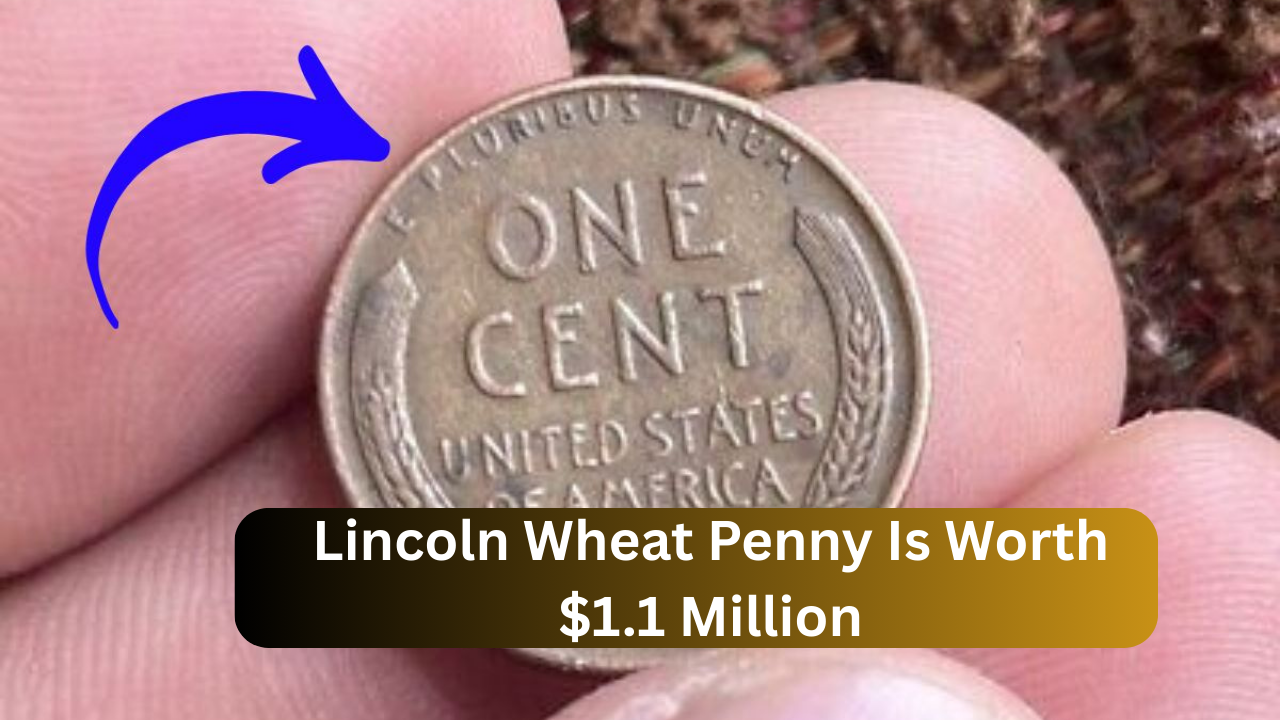Many people empty the contents of their pockets each day by pouring their spare change into collection cans without thinking twice. You might have used a penny for payment without taking a close look although you knew its worth was only one cent. A Lincoln Wheat Penny with an ordinary appearance might turn out worth more than $1.1 million. Yep, really. In the rare coin community, a single little penny may have a life-altering price tag.
This detailed discussion explains why standard Lincoln Wheat Pennies generate such enthusiasm among numismatists and helps readers determine the presence of valuable pennies in their pocket change. Whether you’re an experienced collector, an enthusiastic hobbyist, or you’ve found an old stash of coins in Grandma’s attic, this guide will provide you with all you need to know.
This Rare Lincoln Wheat Penny
| Feature | Details |
|---|---|
| Coin in Focus | 1943 Lincoln Wheat Penny (Bronze/Copper) |
| Estimated Value | Up to $1.7 million (Heritage Auctions, 2010) |
| Mint Error | Mistakenly struck in copper instead of steel |
| Other Valuable Pennies | 1909-S VDB, 1955 Doubled Die, 1922 No D |
| Testing Method | Magnet test (copper is non-magnetic) |
| Official Resource | U.S. Mint |
If you’re holding onto old change or have inherited a dusty jar of coins, now might be the perfect time to take a closer look. The legendary 1943 Lincoln Wheat Penny has already made headlines for selling for over a million dollars, and other rare variations are not far behind.
With some proper information, a magnet, and a bit of patience, you might discover a coin worth thousand—or even millions. So next time you receive change back from a coffee shop run or sort through a drawer, recall that you might be sitting on a forgotten fortune.

What Makes the 1943 Lincoln Wheat Penny So Valuable?
In 1943, the United States was in the midst of World War II. As part of the war effort, the government required copper for ammunition and other war equipment. So the U.S. Mint switched: rather than using copper to coin pennies, they started using zinc-coated steel. These 1943 steel pennies are plentiful and fairly easy to locate.
But in error, a few bronze planchets (the copper disks used to produce pennies in 1942) were retained in the minting machines and utilized to strike 1943 pennies. The outcome? A very small quantity of 1943 bronze Lincoln Wheat Pennies, which are now regarded as some of the rarest and most valuable coins in the U.S.
Fewer than 10 to 15 of the authentic examples ever have been proven. One such rare coin sold for a record $1.7 million in 2010 via Heritage Auctions. It’s no wonder that coin collectors are encouraging folks everywhere to look through their loose change – because you never know what you’re going to see.
You can confirm this mintage oddity through the official coin archive at the Smithsonian Institution.
What Is a Lincoln Wheat Penny?
The Lincoln Wheat Penny is among the most iconic of American coins. Released in 1909 to commemorate the centennial of Abraham Lincoln’s birthday, it was the first American coin to ever bear a genuine historical portrait.
Created by Victor David Brenner, the obverse has a portrait of Lincoln, and the reverse has two ornate wheat stalks surrounding the words “ONE CENT” and “UNITED STATES OF AMERICA.” This reverse design was used until 1958 when the Lincoln Memorial design replaced it.
The coins were produced at three mints:
- Philadelphia (no mint mark)
- Denver (D)
- San Francisco (S)
Millions were manufactured annually, yet certain years and mistakes have turned some coins extremely more valuable than others.

Exotic and Rare Lincoln Pennies to Search For
In addition to the 1943 bronze penny, a number of other Lincoln Wheat Pennies have commanded high prices on account of their rarity, historic interest, or minting defects. A couple of examples of these are:
1. 1909-S VDB Penny
- Only 484,000 were minted, one of the lowest mintages in the series
- Has the designer’s initials “V.D.B.” on the bottom reverse
- Public outcry against the initials resulted in them being removed, creating rarity
- Value: Up to $168,000 in perfect, uncirculated condition
2. 1955 Doubled Die Penny
- A serious minting error resulted in the date and “LIBERTY” being clearly doubled on the obverse
- Estimated 24,000 entered circulation
- Clearly visible without magnification in well-preserved examples
- Value: Up to $100,000 for high-grade coins
3. 1922 No D Penny
- All pennies dated 1922 were struck in Denver, but because of die wear, a few of the coins lack any visible mint mark
- Estimated as a scarce mint error
- Value: Up to $30,000, depending on grade
4. 1944 Steel Penny

- Another oddity: although pennies dated 1944 should have been made on copper, a few were produced on residual steel planchets from 1943
- Fewer than 30 are confirmed
- Value: Worth up to $100,000 or more
How to Find a Rare Lincoln Wheat Penny in Your Pocket Change
Finding a rare coin can be very easy using the right tools and information. Here’s how you can look through your own pocket change to see if you have valuable pennies:
Step 1: Inspect the Date and Mint Mark
Examine closely the year and the mint mark (lower-case letters under the date). Rare coins are sometimes associated with particular years such as 1909, 1922, 1943, 1944, and 1955.
Step 2: Magnet Test
If you have a 1943 penny, do the following:
- Place a small magnet against it
- If it clings, it’s the common steel penny
- If it doesn’t cling, it might be the rare bronze type
Step 3: Weigh the Coin
Use a sensitive electronic scale:
- Copper penny: ~3.11 grams
- Steel penny: ~2.7 grams
- If your 1943 penny weighs near 3.11g, it could be bronze
Step 4: Check for Design Flaws

Flaws like doubling, absent mint marks, or off-center strikes can bring enormous value. A jeweler’s loupe or magnifying glass can be used to identify these.
Where and How to Authenticate a Rare Lincoln Wheat Penny
Think you’ve found a rare coin? Don’t guess—authenticate it. Here are your best options:
Professional Coin Grading Services
- Professional Coin Grading Service (PCGS)
- Numismatic Guaranty Company (NGC)
These organizations will inspect, certify, and grade your coin. Graded coins often sell for more due to the trust these companies offer buyers and collectors.
Local Coin Dealers and Shows
Consult listed dealers from the American Numismatic Association (ANA). They will provide you with free or inexpensive appraisals and assist in sending your coin for grading.
Tips for Newbies and Coin Enthusiasts
Starting a collection does not mean going broke or reading books on coin collecting for decades. Following are some tips to get started:
- Begin with a penny book: Attempt collecting a single penny each year so you can get acclimated with the series
- Keep a coin journal: Date, location, and condition of your discoveries
- Use safe storage: Store coins in archival-quality holders, away from moisture and direct sunlight
- Join a community: Online forums, Facebook groups, and local clubs are great places to learn
- Read trusted sources: Subscribe to Coin World and Numismatic News
FAQs:
How many 1943 bronze pennies are there?
Most experts agree that there are fewer than 20 known authentic bronze 1943 pennies, with discoveries still occasionally surfacing.
How can I tell if my 1943 penny is bronze or steel?
Try the magnet test first. Then weigh it with a digital scale. If it doesn’t stick to a magnet and weighs about 3.11 grams, it might be bronze.
What makes wheat pennies valuable?
Low mintage numbers, minting errors, and unique features such as design doubling or missing marks contribute to a penny’s rarity and value.
Can I really sell a rare penny online?
Absolutely. Websites like eBay, Heritage Auctions, and GreatCollections are common platforms. Make sure your coin is professionally graded to attract serious buyers.
